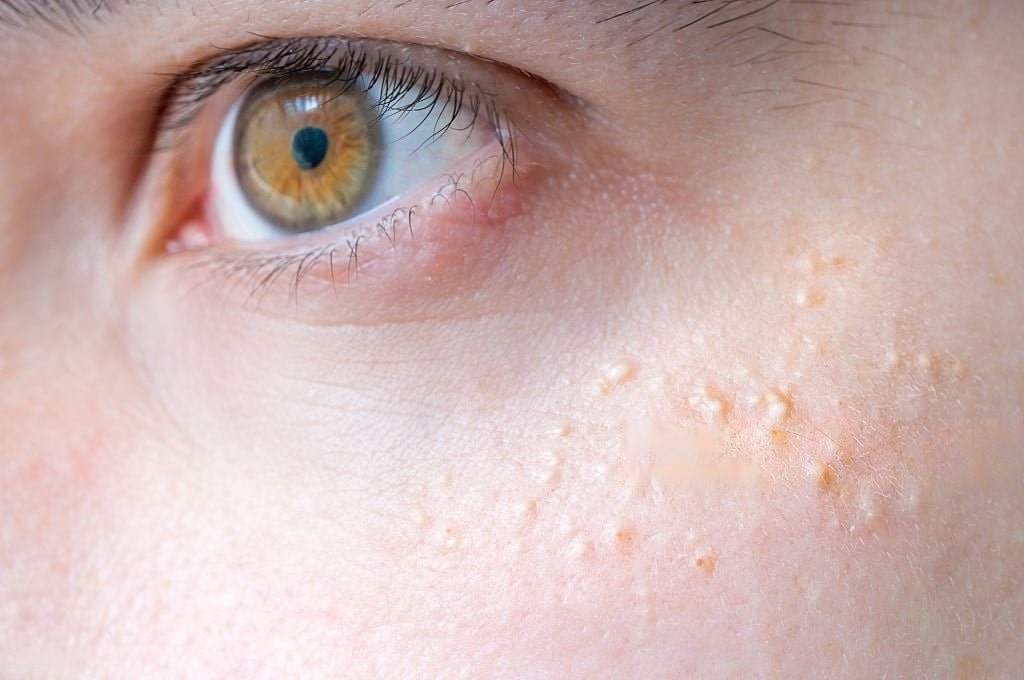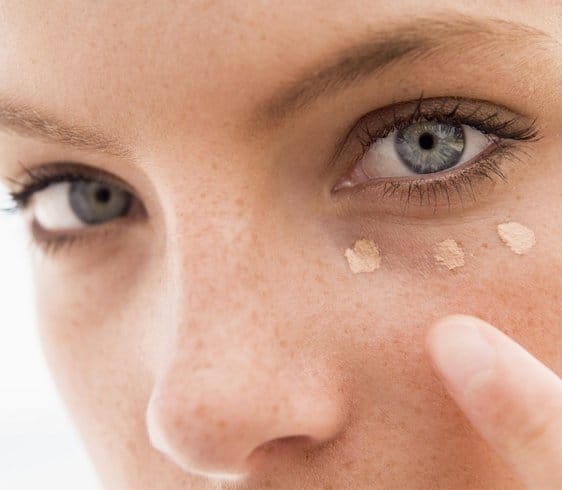Milialar, or “Milia” in medical terminology, is a common skin condition characterized by the appearance of small, painless bumps of white or yellowish color. These benign cysts can show up anywhere on your body, including your face. Milia are harmless growths on the skin, although they can cause cosmetic concerns for people who have them. Here, we’ll get down to the nitty-gritty of milia, investigating what causes them, where they seem to show up most often, and what treatments are available.
What is Milialar
Small, painless lumps of a white or yellowish tint can occur on the skin due to the common skin ailment known as milia. Milia develop when the protein keratin, which makes up the skin’s outermost layer, becomes stuck below the skin’s surface. Milialar come in a few different forms, the most common of which are primary milia, which appear on their own, and secondary milia, which appear as a result of skin injury or specific skin disorders.
These benign cysts seldom if ever cause any kind of discomfort. In many cases, they clear up on their own when the trapped keratin is shed by the skin. Milia can be harmless, however some people may prefer to have them surgically removed if they are persistent or positioned in an obvious place.
Milia are not the same as other types of acne or pimples, so keep that in mind. Consult a dermatologist or other medical practitioner for an accurate diagnosis and advice on how to proceed with milia removal.
Causes of Milialar

Several factors contribute to the development of milia. Managing and averting these events need a thorough understanding of their root causes. Some of the most important causes of milia are as follows:
Blocked Sweat Glands
When sweat ducts become clogged with dead skin cells, oil, or other debris, it can lead to milia. Small cysts can occur if perspiration cannot reach the skin’s surface because of the obstruction.
Skin Trauma
Milialar can appear after a skin injury, including a burn, blister, or sunburn. Miliary cysts can form when trapped keratin, a protein present in the skin’s outermost layer, accumulates during the healing process.
Use of Heavy Skincare Products
Milialar may develop when people with sensitive or reactive skin use cosmetics that are too thick or oily. Miliary cysts might develop if the skin’s normal exfoliation process is hampered by using these products.
Genetic Predisposition
Milia may have a hereditary component in certain persons. In such circumstances, having a relative who also suffers from the ailment might be a significant risk factor.
Excessive Sun Exposure
Sunburns and milia are two of the many skin problems that can result from prolonged contact to the sun’s harmful ultraviolet (UV) radiation.
Certain Skin Conditions
As a side result of their original skin ailment, people with epidermolysis bullosa or porphyria cutanea tarda may be more likely to develop milia.
Use of Steroids
Known as “steroid-induced milia,” this disease occurs when the skin’s reaction to topical corticosteroids, which cause the formation of small cysts, is prolonged.
Milia are benign skin bumps that usually go away on their own, but it’s crucial to remember that medical intervention may be necessary in rare circumstances. Consult a dermatologist for a correct diagnosis and information on acceptable treatment options if you are worried about milia or suffer persistent or troublesome symptoms.
Treatment Options

There is a wide range of possible therapies to choose from. Considerations such as Milialar type, location, and patient preference inform therapy decisions. Milia can be treated in a variety of ways.
- Extraction by a Dermatologist: Using a comedone extractor or a lancet, dermatologists can safely remove milia from the skin. This treatment takes very little time and effort. Milia should not be extracted at home since doing so might cause infection or scarring.
- Topical Retinoids: Milialar can be reduced with regular use of tretinoin or another topical retinoid cream, which can be purchased without a doctor’s prescription. These items are intended for usage under the supervision of a medical expert.
- Chemical Peels: Chemical peels, typically suggested by dermatologists, include the application of solutions with an acidic pH. This can help lessen the appearance of milia and smooth out the skin.
- Cryotherapy: In some cases, milia can be frozen and removed with the use of liquid nitrogen. In the case of some milia, this method of therapy is quick and easy.
- Laser Therapy: Milia can be treated with lasers like the CO2 and erbium lasers. Multiple milia or milia in a sensitive location respond very well to laser treatment.
- Microdermabrasion: Tiny crystals or a diamond-tipped wand are used to exfoliate the skin’s surface in this non-invasive process. The appearance of milia can be reduced and skin texture enhanced with microdermabrasion.
- Good Skincare Practices: Milialar should be avoided in the first place if at all possible. Mild exfoliation and the use of non-comedogenic (non-pore-clogging) products performed on a regular basis can reduce the likelihood of developing new milia.
Preventing Milialar
Milialar are often harmless and go away on their own, but you can help your skin stay healthy and limit the likelihood of more milia by preventing them from appearing in the first place. You can take the following precautions:
Gentle Cleansing
Cleanse your face and other afflicted areas with a gentle, non-comedogenic cleanser. Milialar can be caused by skin irritation, thus gentle cleansing is recommended.
Regular Exfoliation
Dead skin cells, which can be a factor in the development of milia, are removed during the exfoliation process. To minimize over-exfoliation, it is best to use mild exfoliants like as alpha hydroxy acids (AHAs) or beta hydroxy acids (BHAs) sparingly.
Sun Protection
Use a broad-spectrum sunscreen with an SPF of 30 or higher to prevent UV damage to your skin. Wearing sunscreen everyday is essential since sun exposure can cause milia.
Avoid Heavy or Greasy Products
Choose cosmetics and skin care products that are oil-free, lightweight, and non-comedogenic. These items are less likely to cause pore blockage and subsequent milia development.
Proper Makeup Removal
Makeup should be completely removed before going to bed. Makeup that has been left on overnight can clog pores and cause milia.
Hydration
Use a good moisturizer to keep your skin supple and nourished. Maintaining the skin’s natural barrier and decreasing the likelihood of irritation, both of which can contribute to milia, can be accomplished by adequate hydration.
Avoid DIY Extraction
Don’t try to do a DIY milia extraction. Squeezing or popping milia can spread illness, cause scars, or irritate the skin even more. Only professional dermatologists should do extractions.
Consult a Dermatologist
If milia persist or cause discomfort, a dermatologist should be seen. Additionally, if you have specific skincare concerns, they will be able to recommend effective treatments.
Balanced Diet
A nutritious diet full of antioxidants and vitamins may help your skin look and feel its best. In order to keep your skin looking its best, it’s important to eat a diet rich in fruits and vegetables and drink lots of water.
Manage Skin Conditions
Consult a dermatologist for help in controlling persistent skin issues like rosacea or eczema. Milia infection risk increases with the presence of certain diseases.
It’s important to keep in mind that, despite the effectiveness of these preventative measures, milia might still develop in some people for reasons beyond their control. A dermatologist or other medical practitioner can provide you information specific to your skin type and requirements if you are worried about milia or wish to take preventative measures.



Comments are closed.